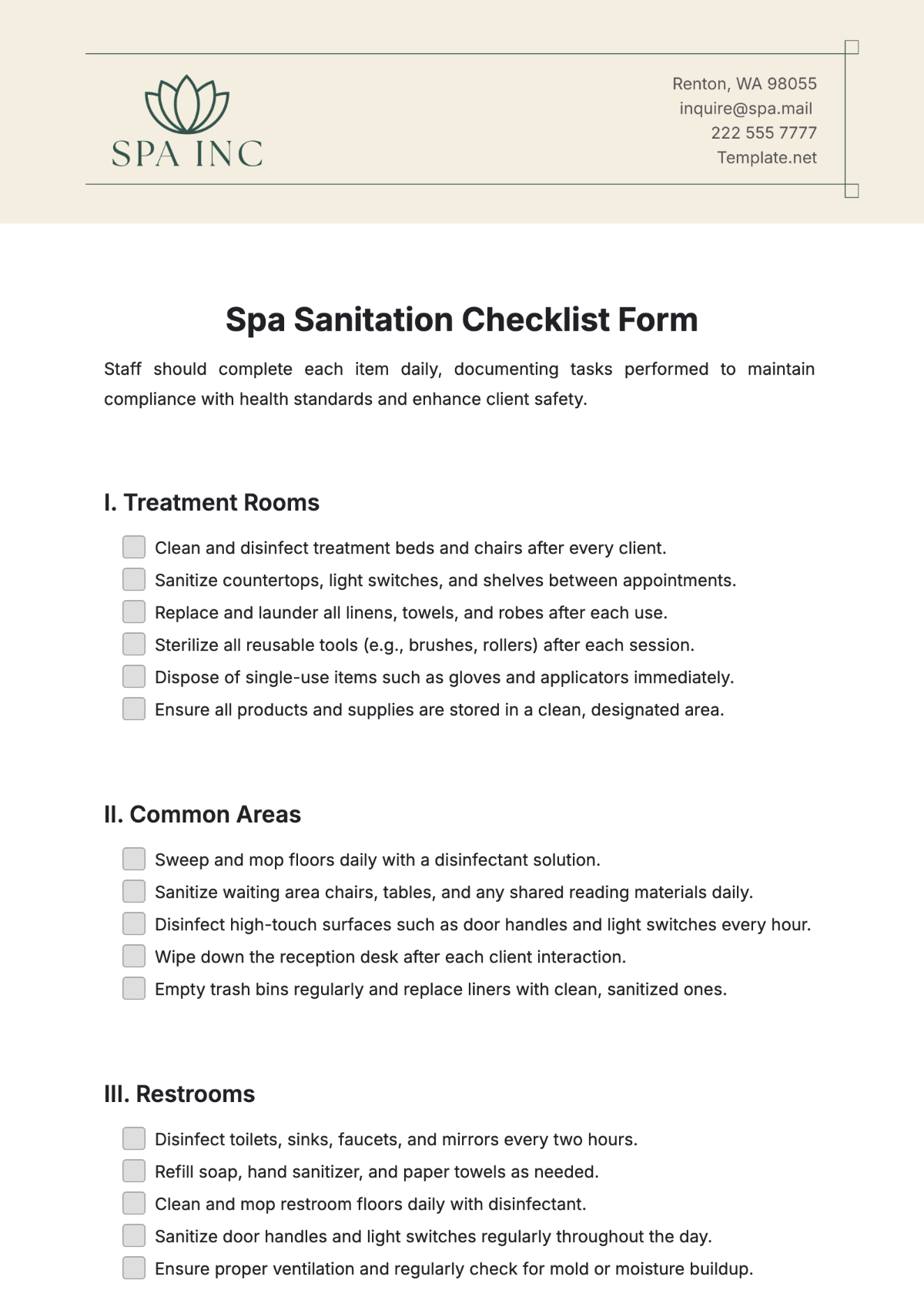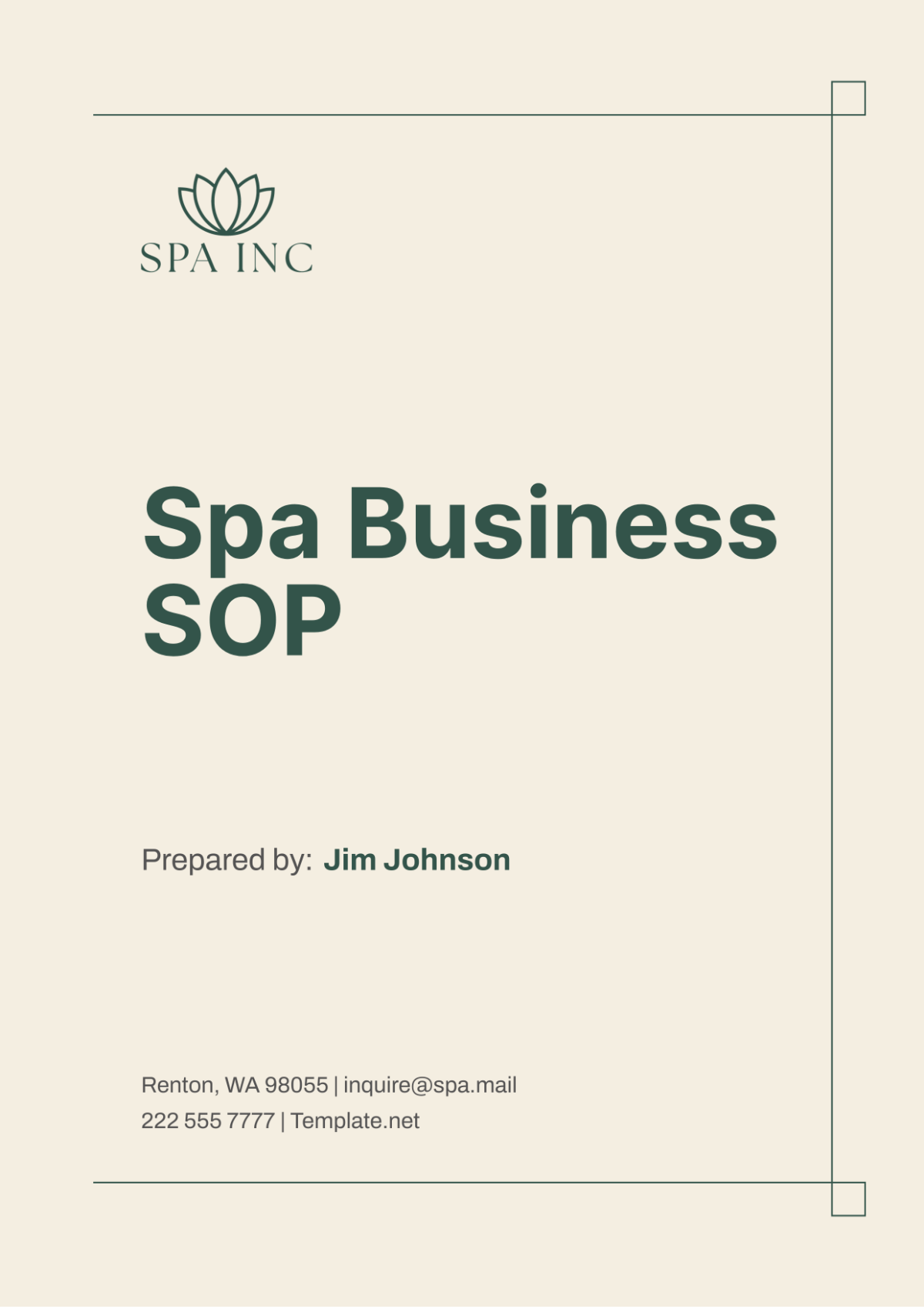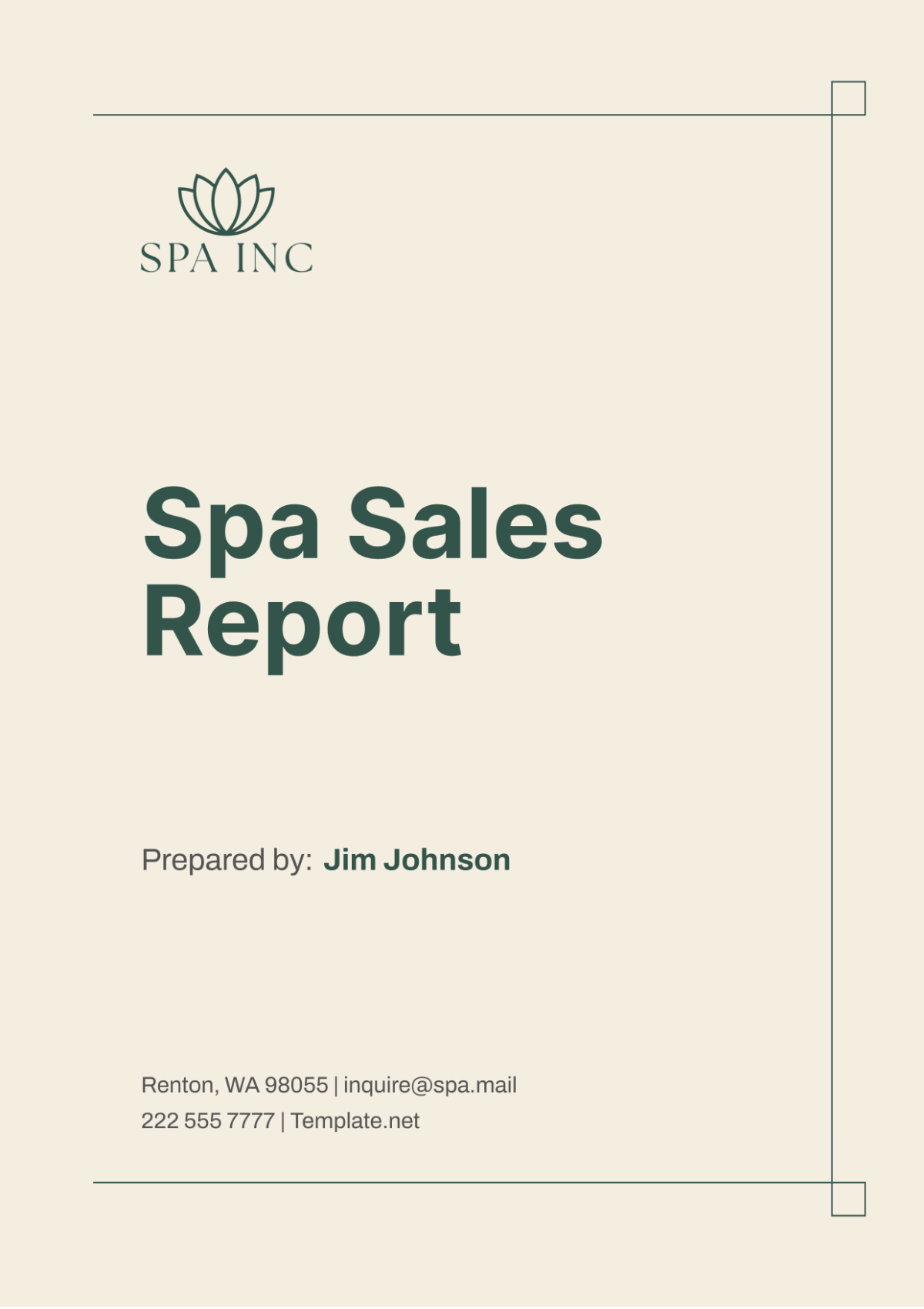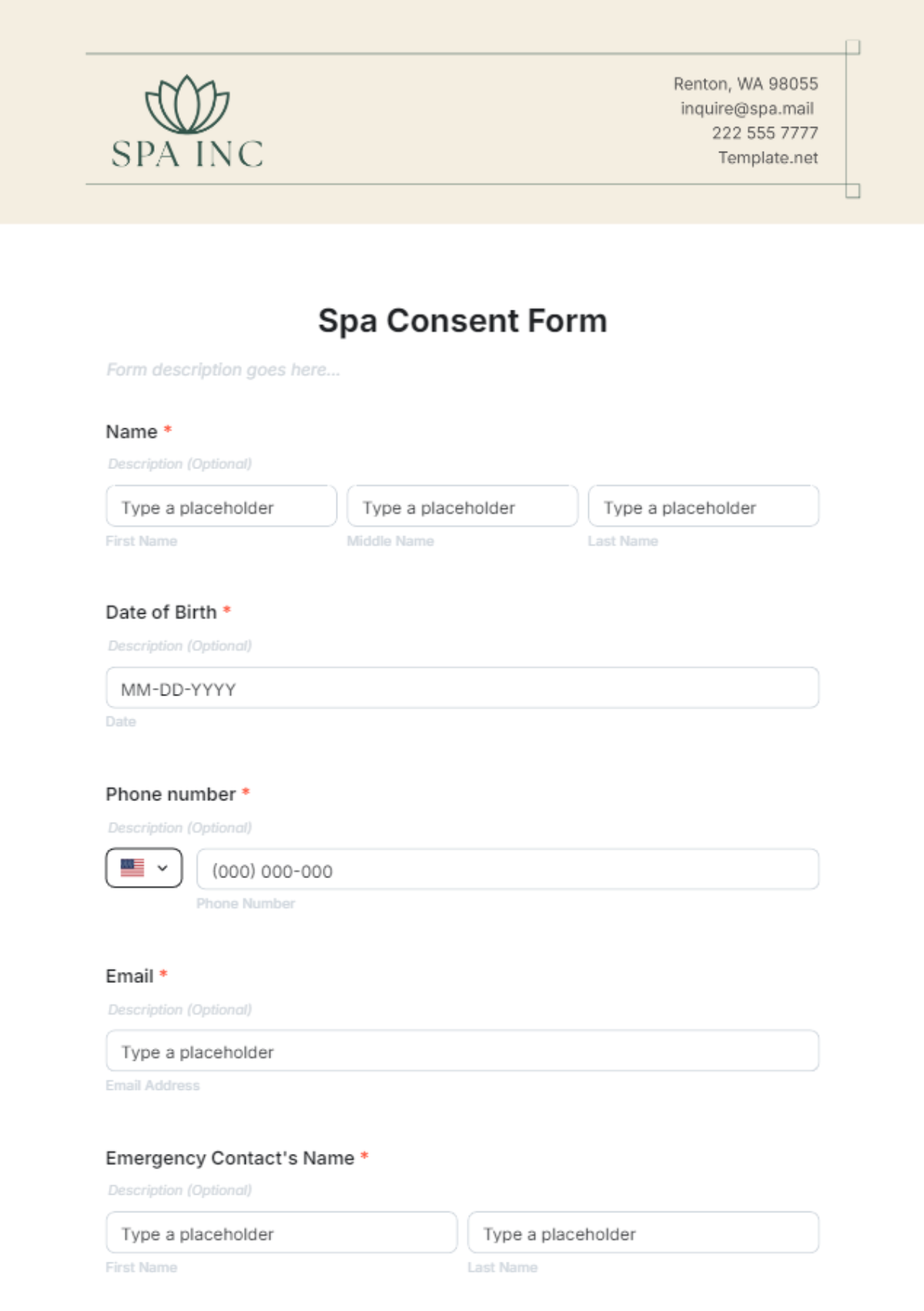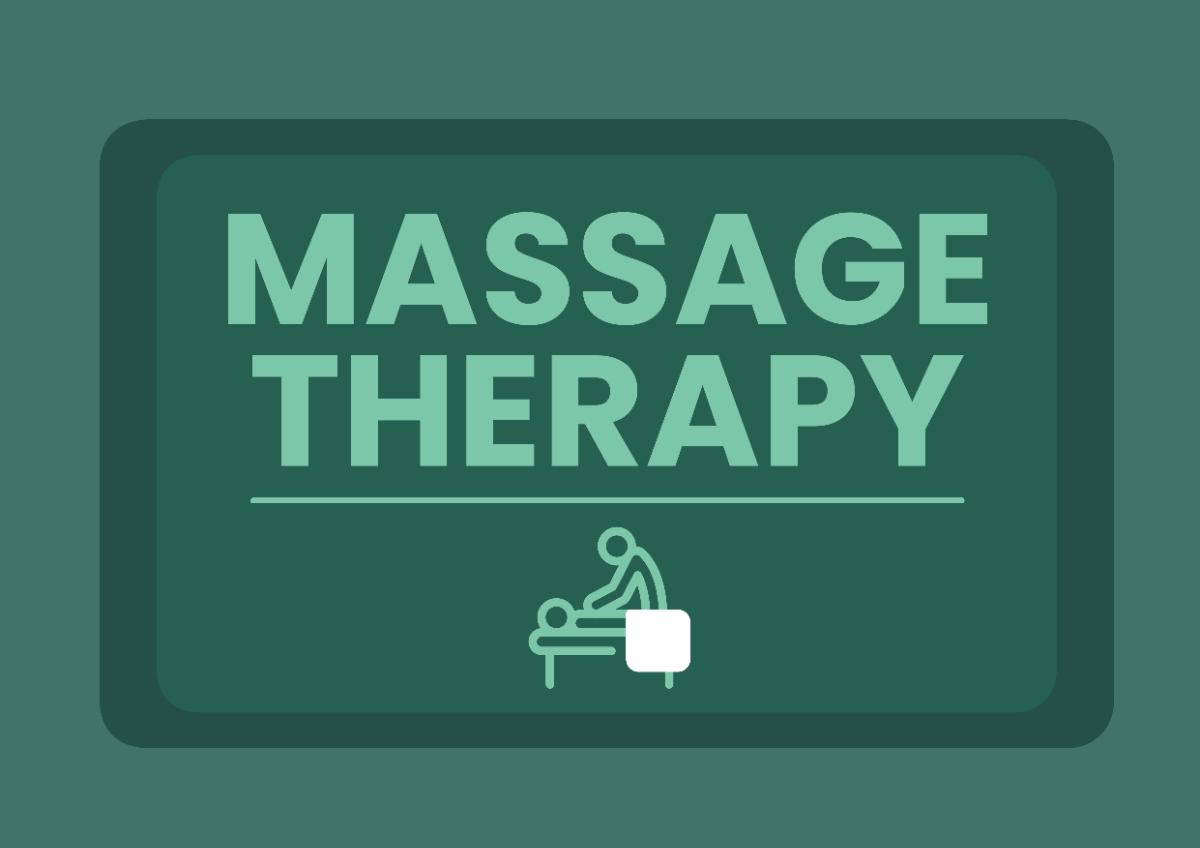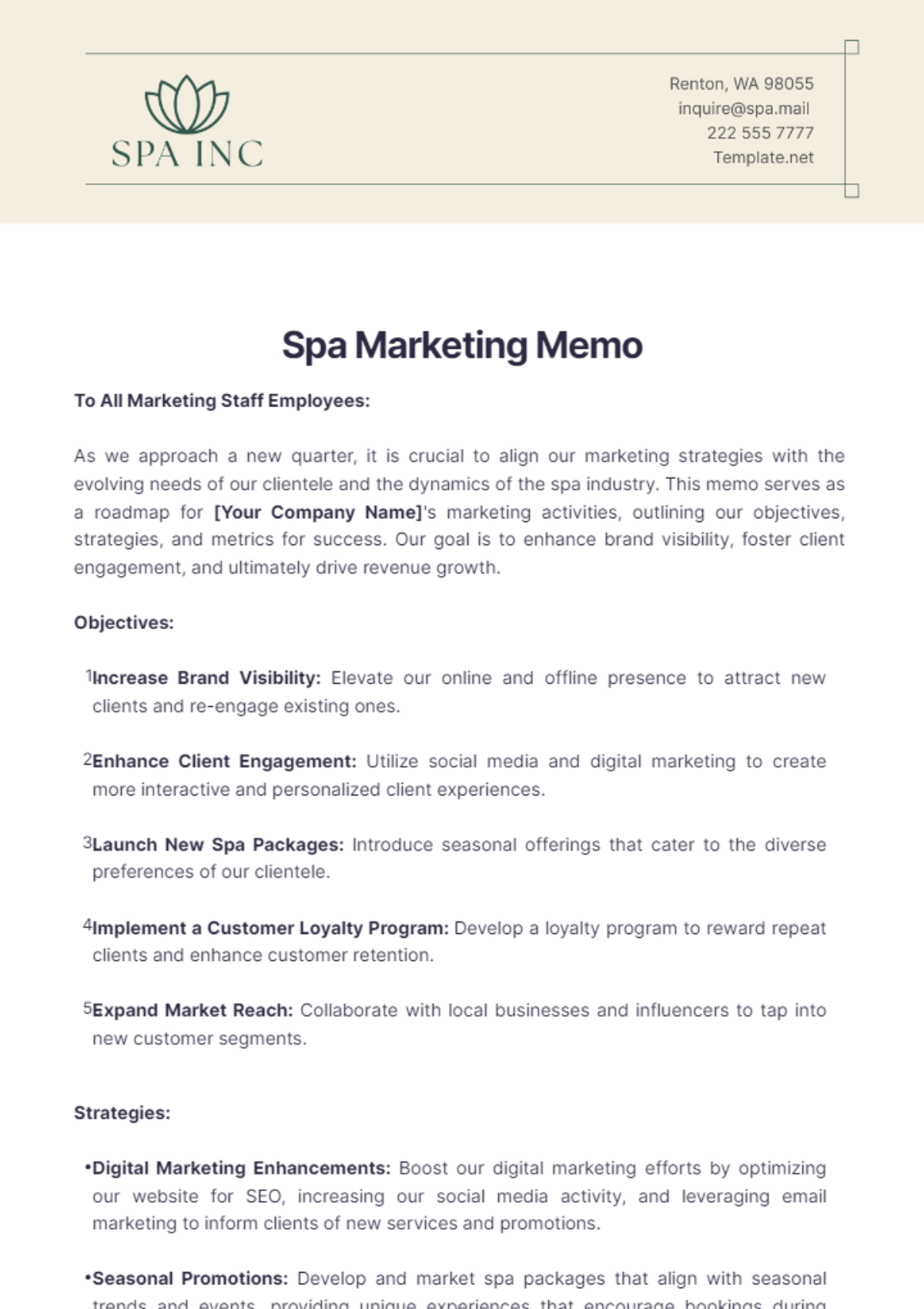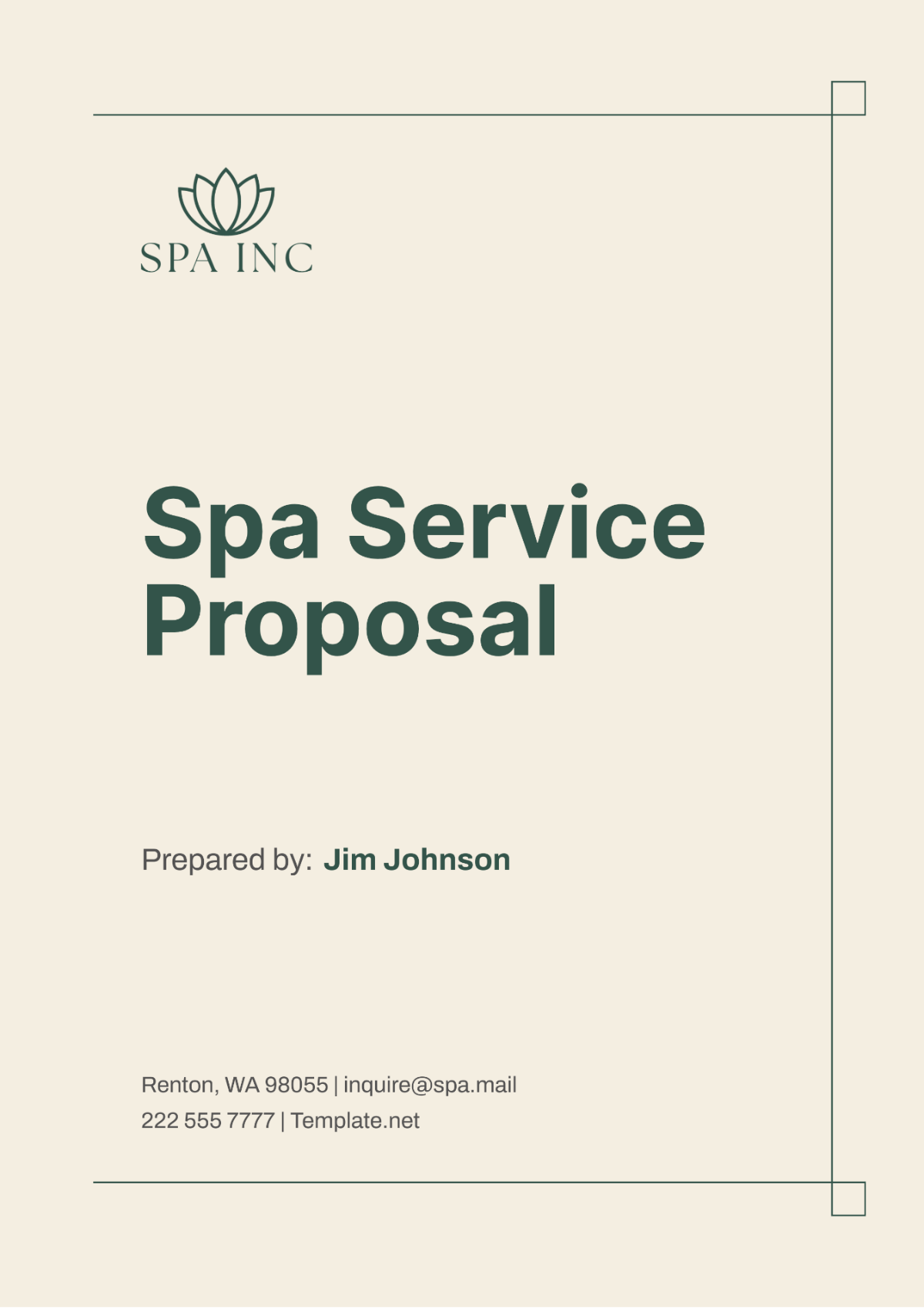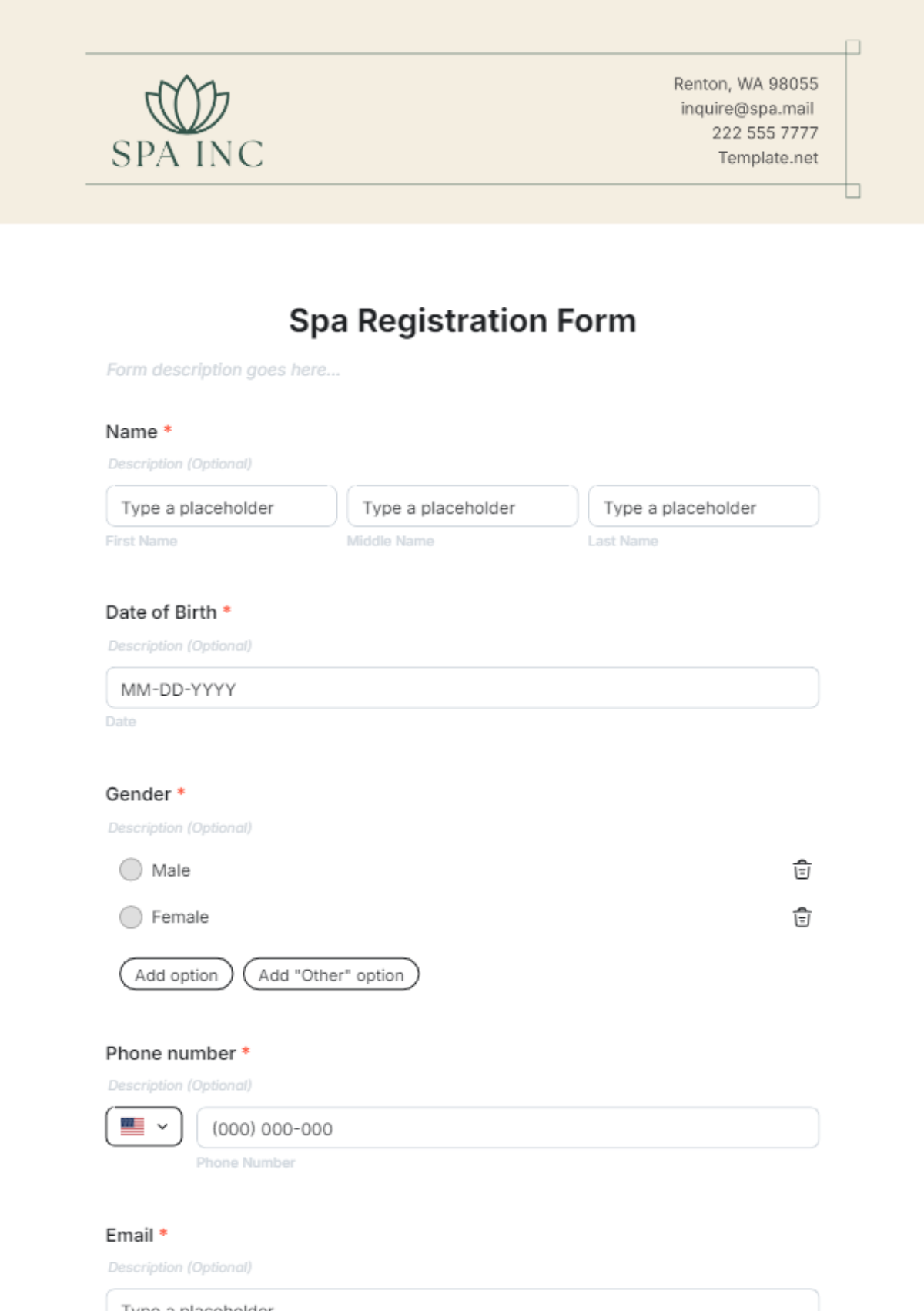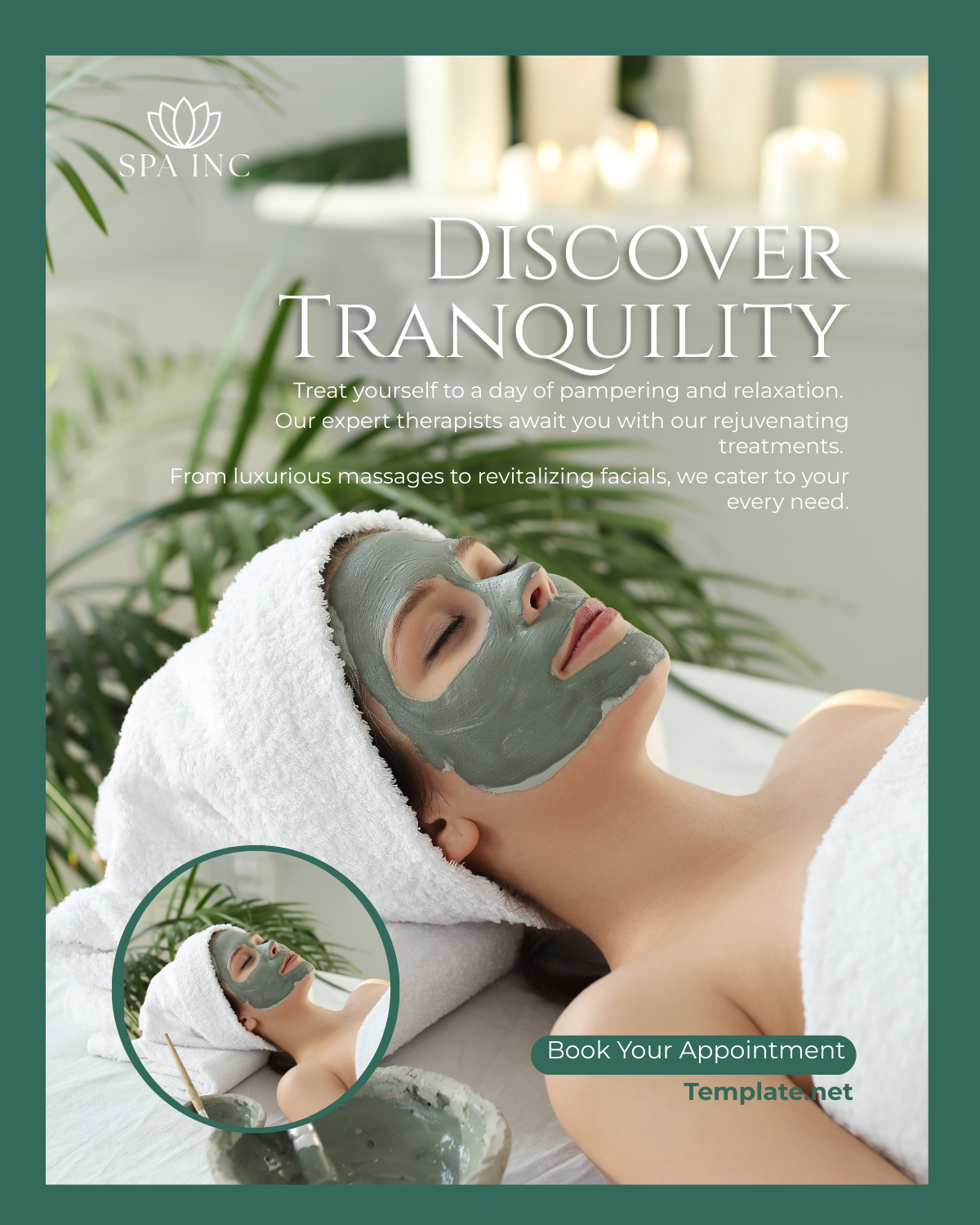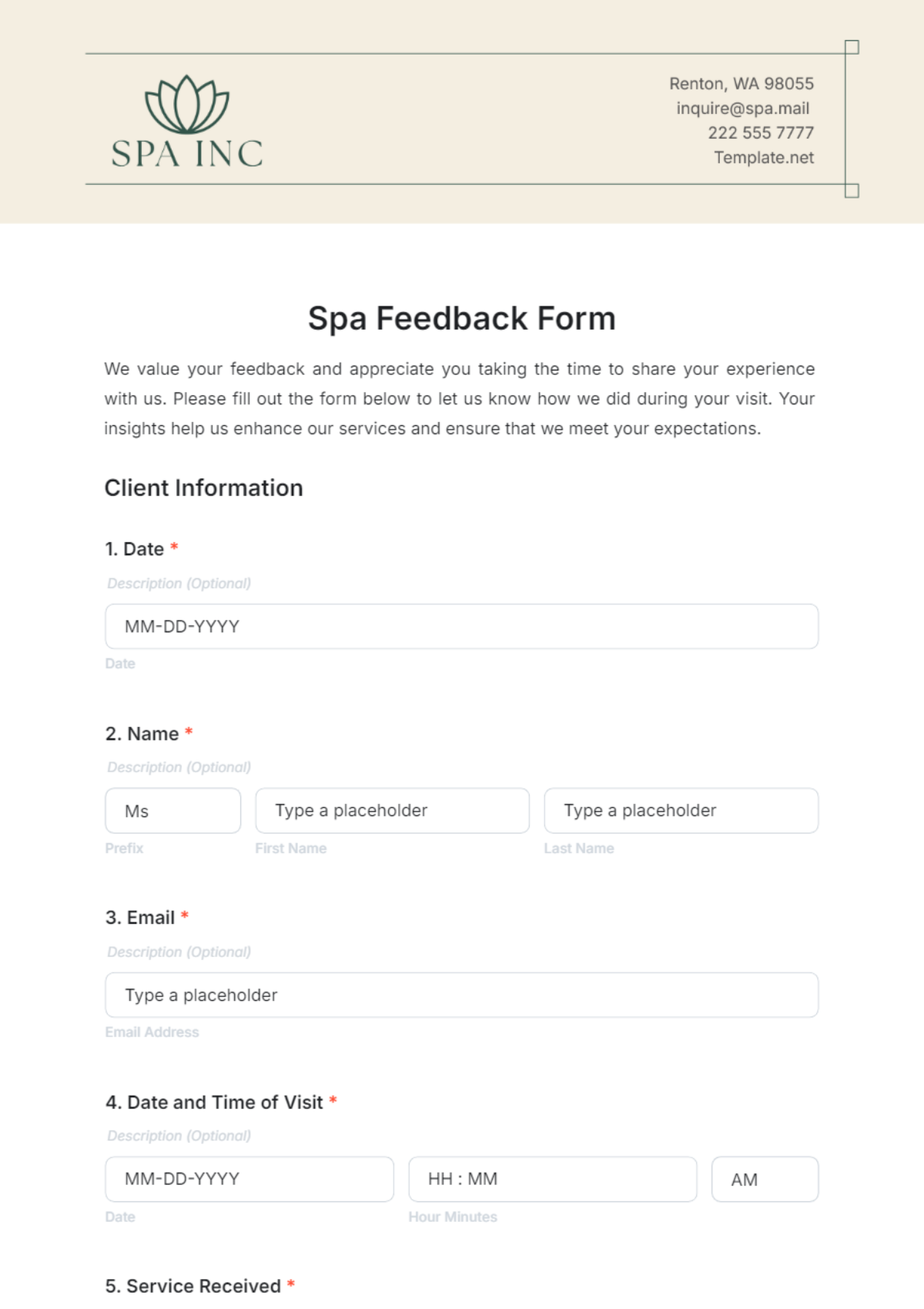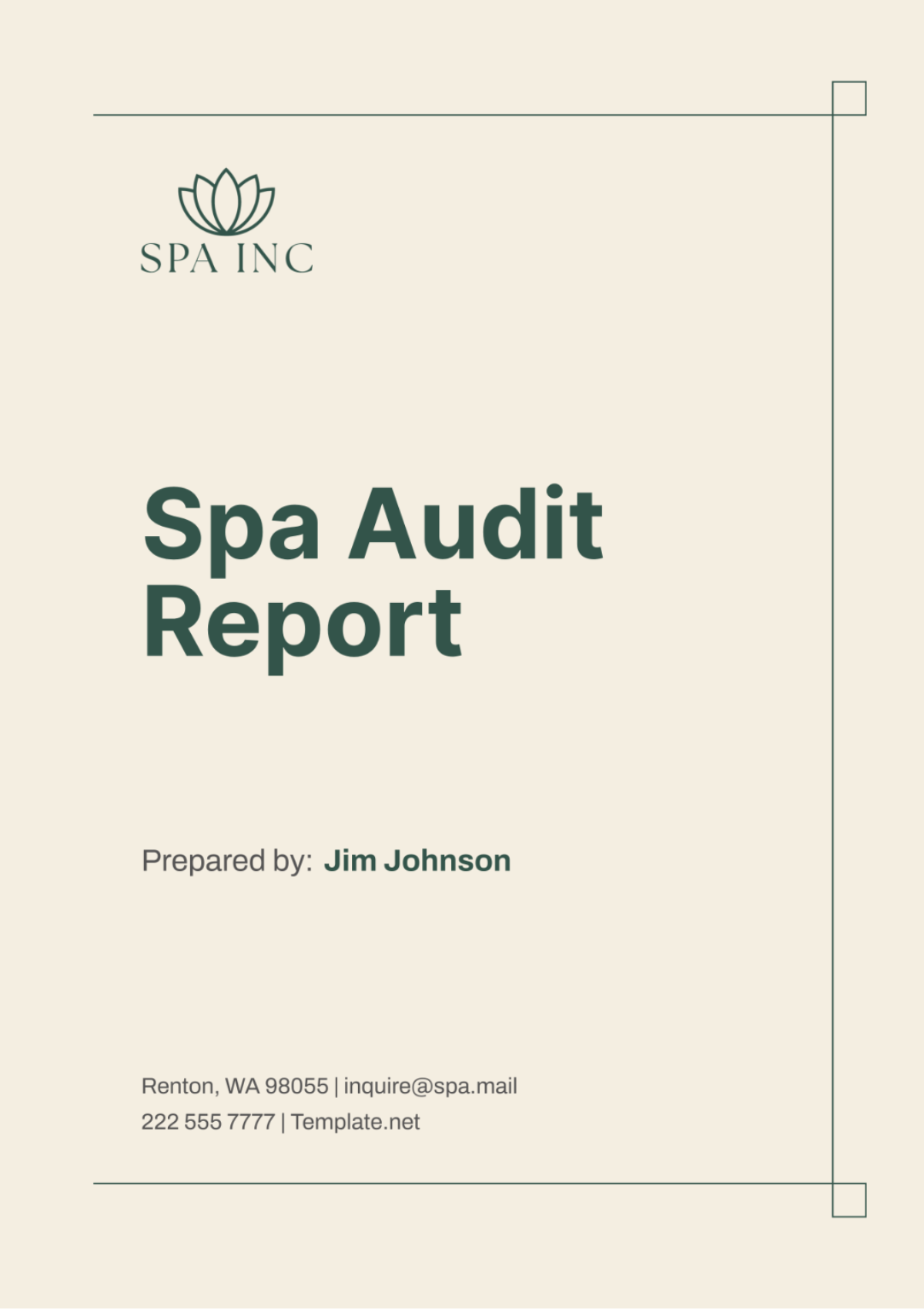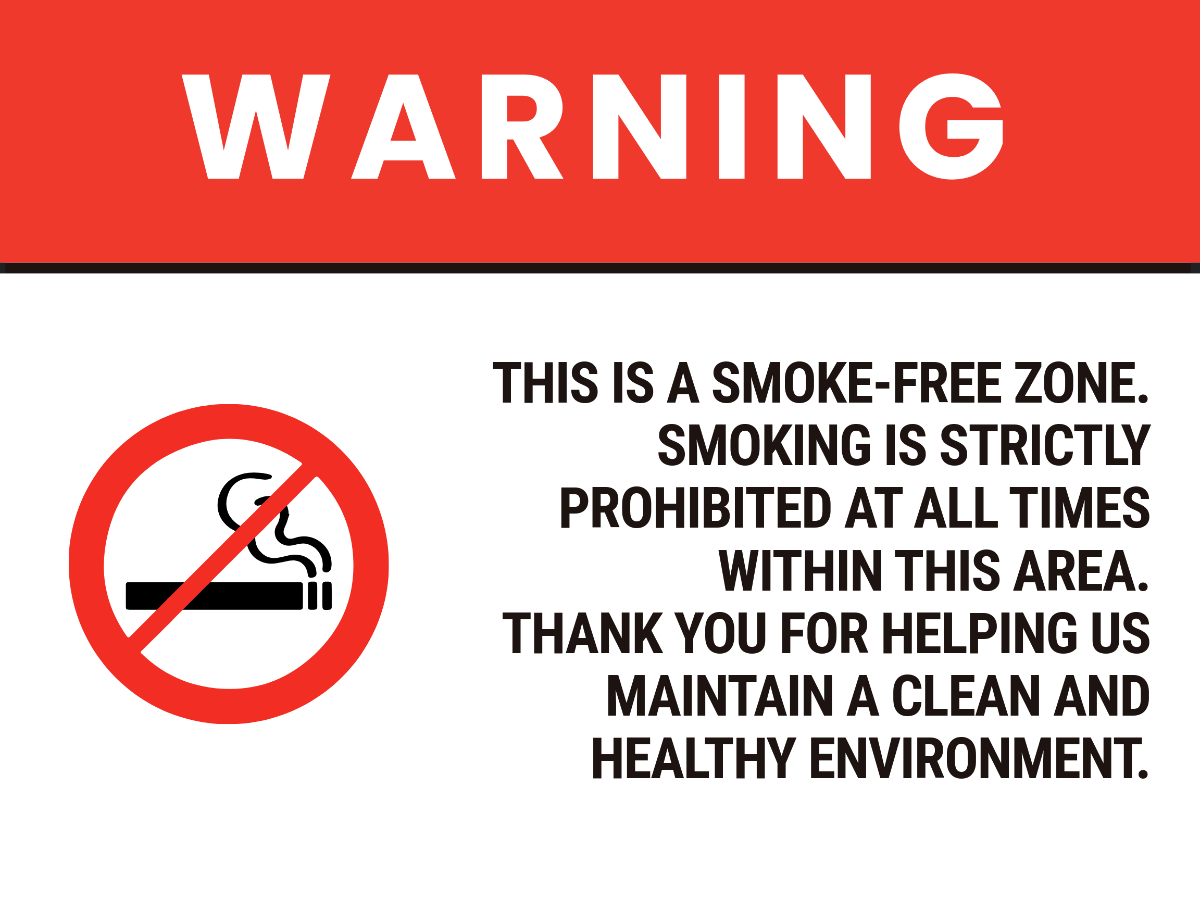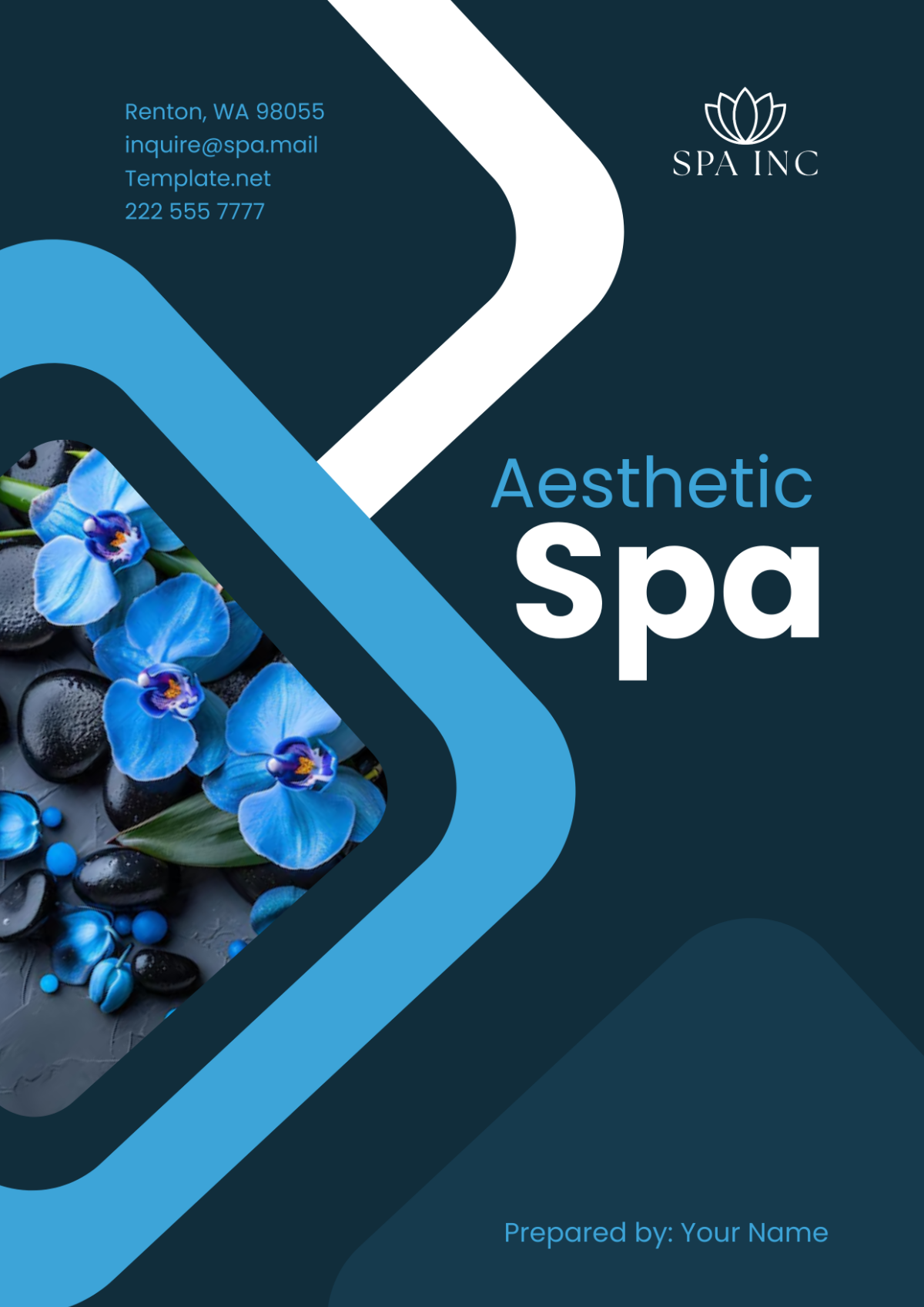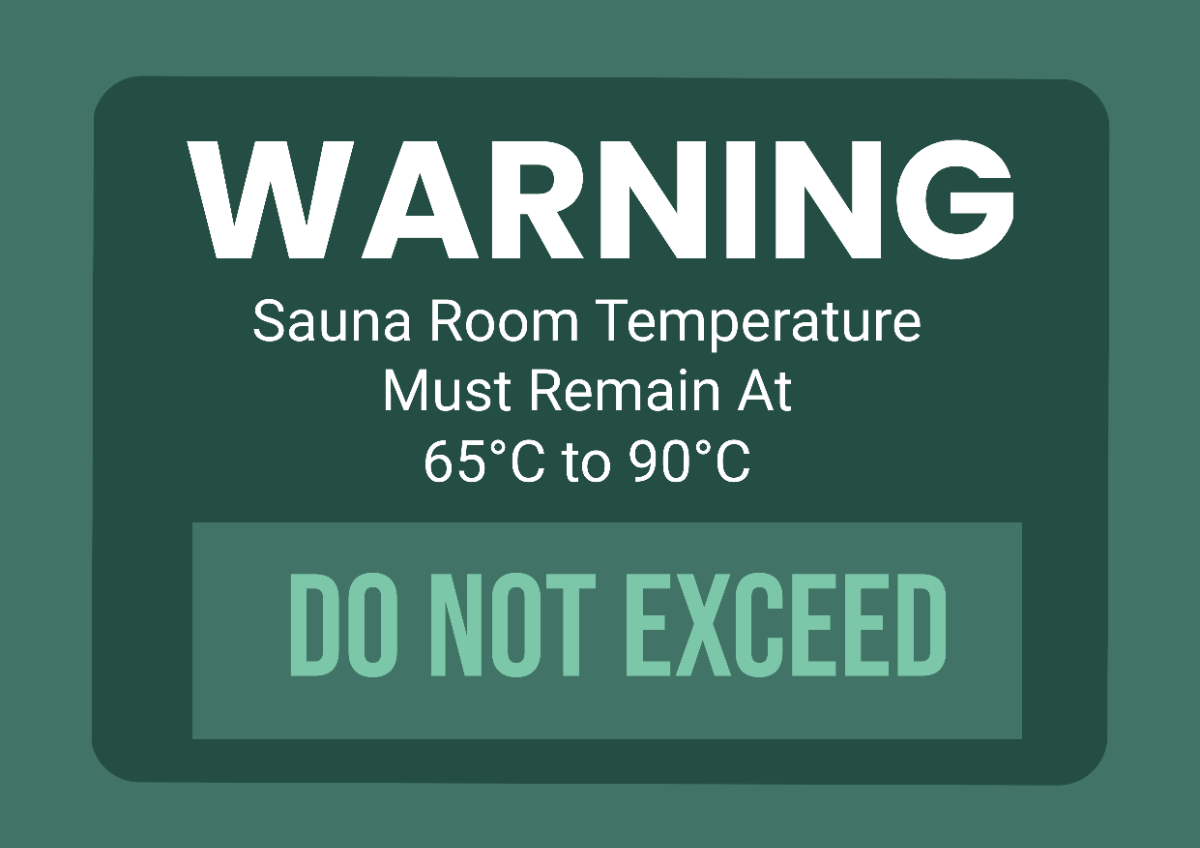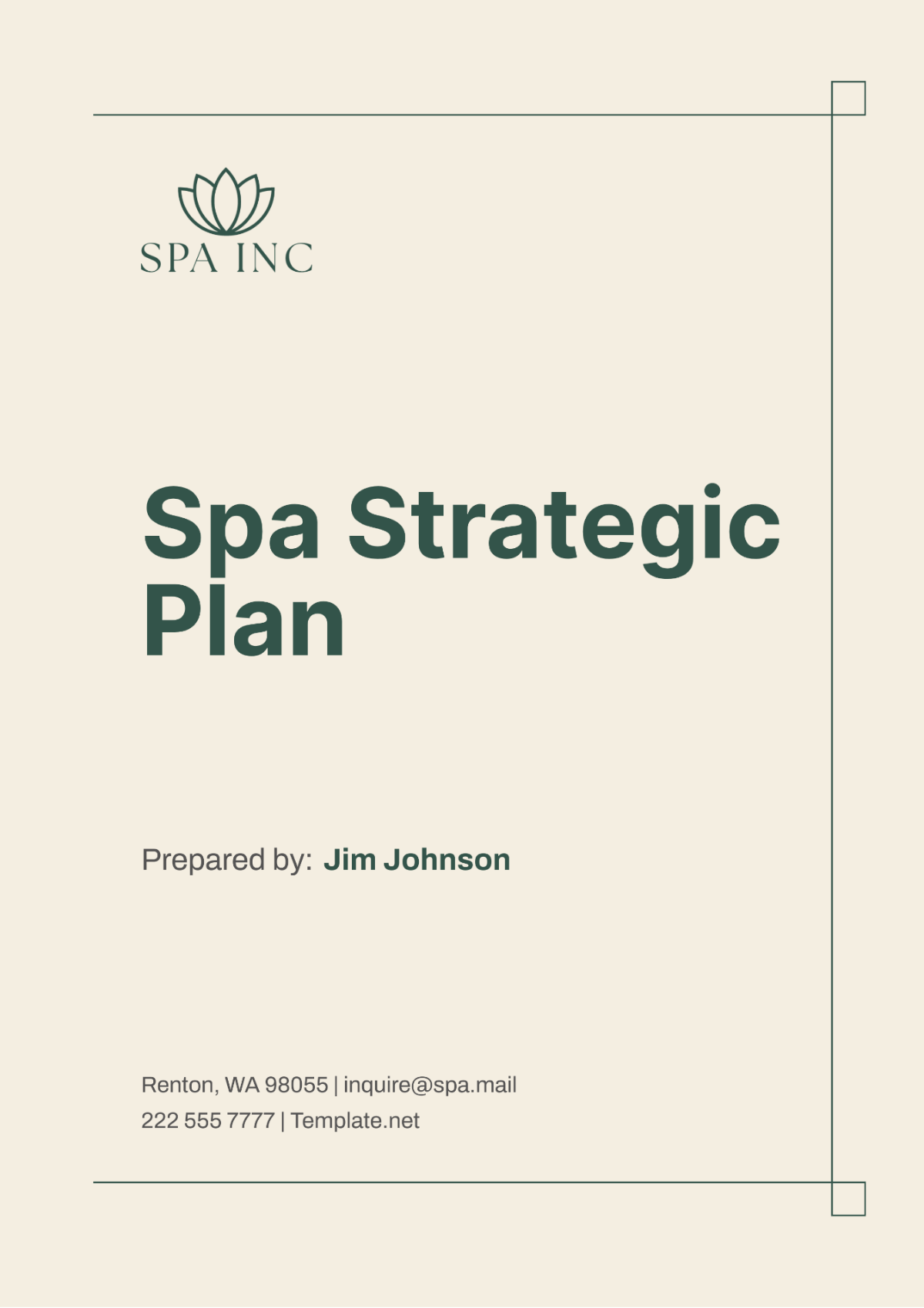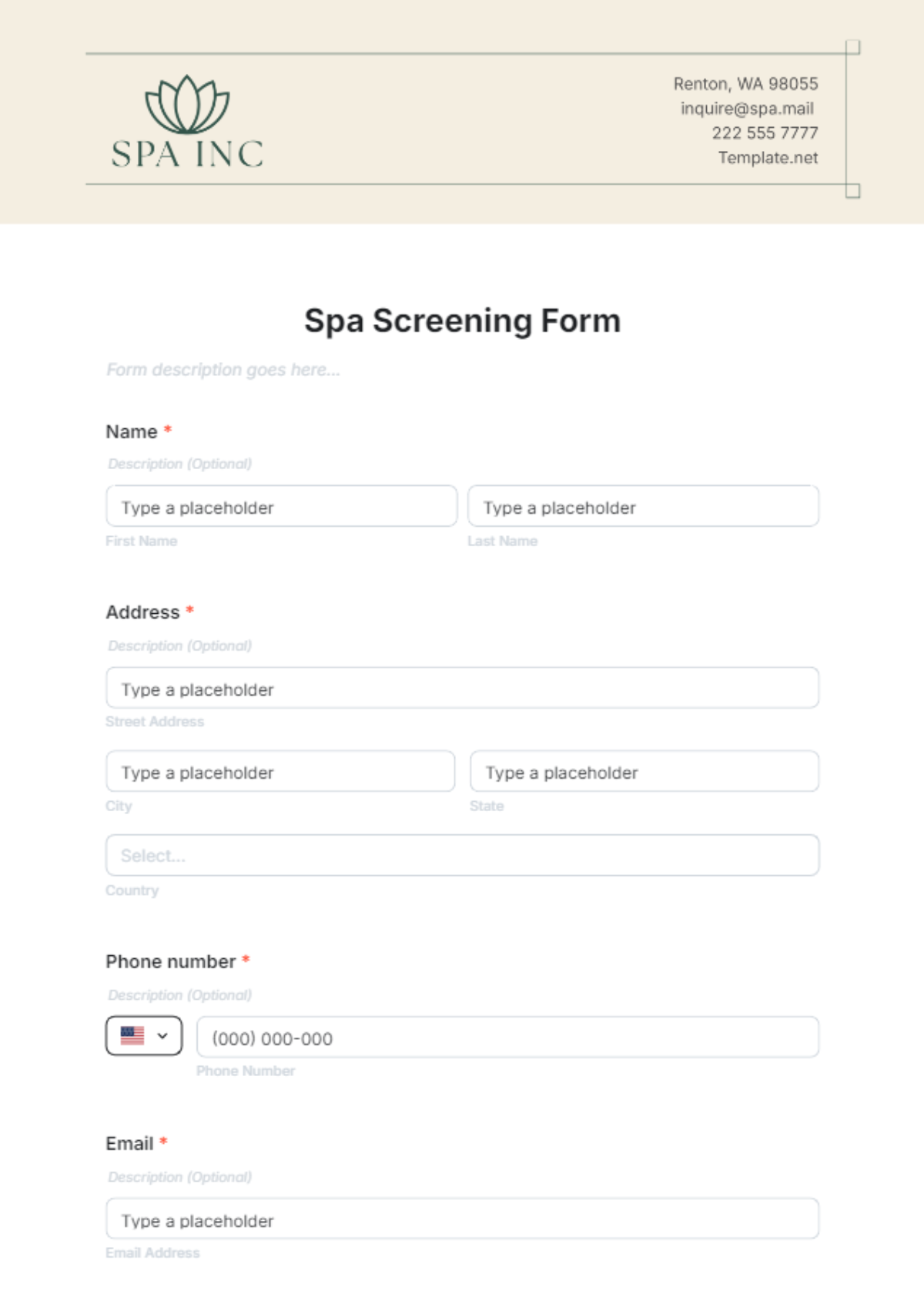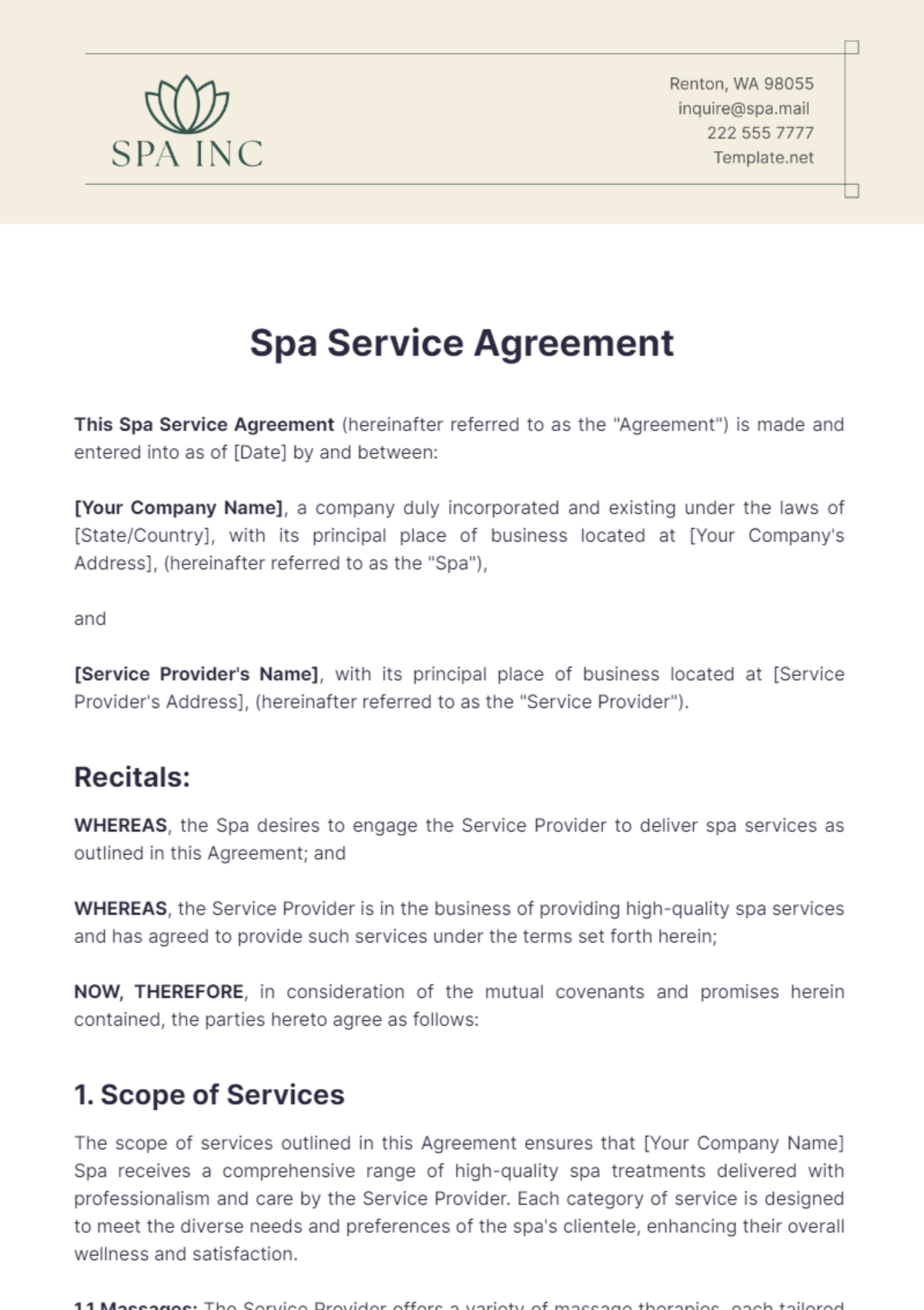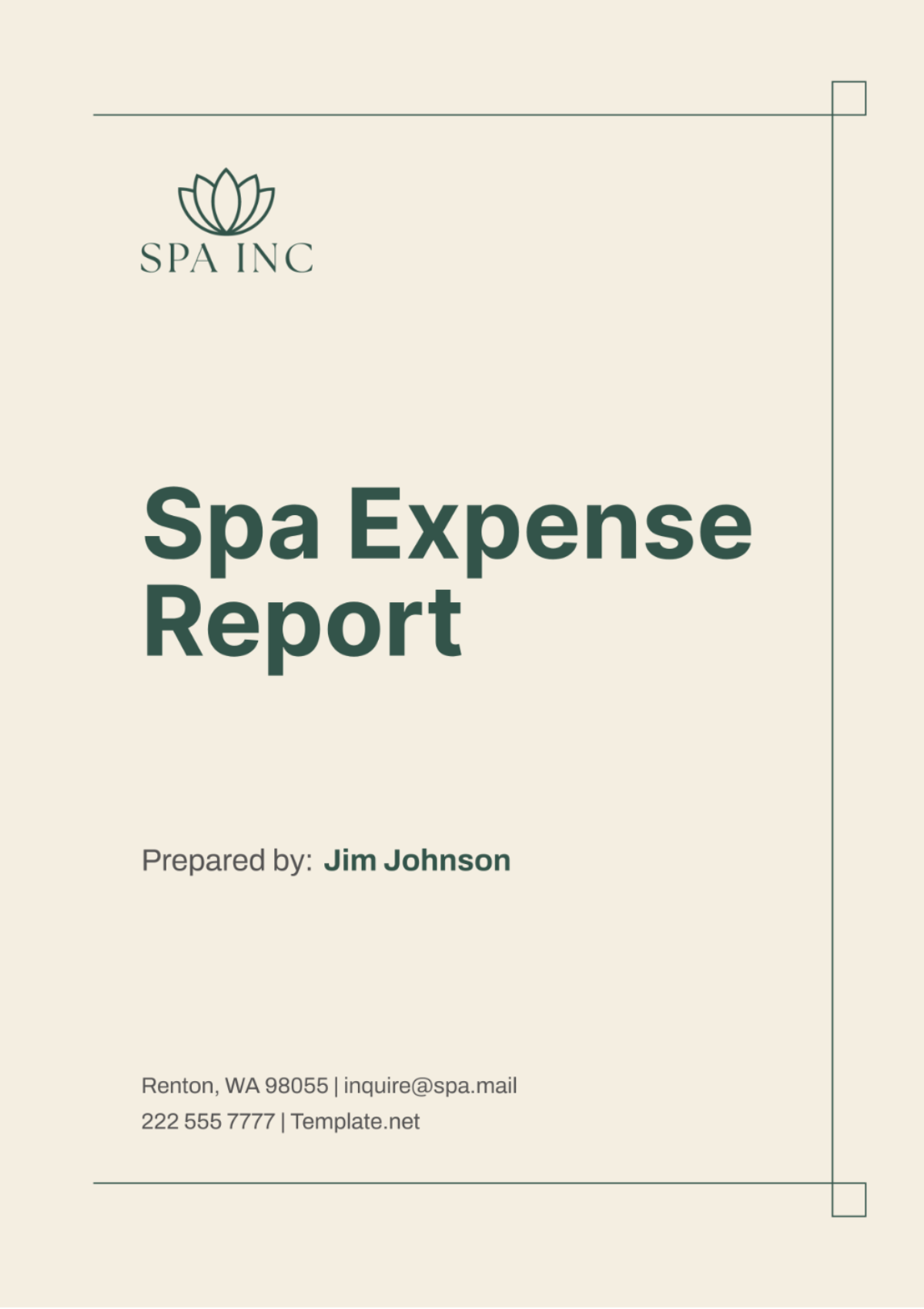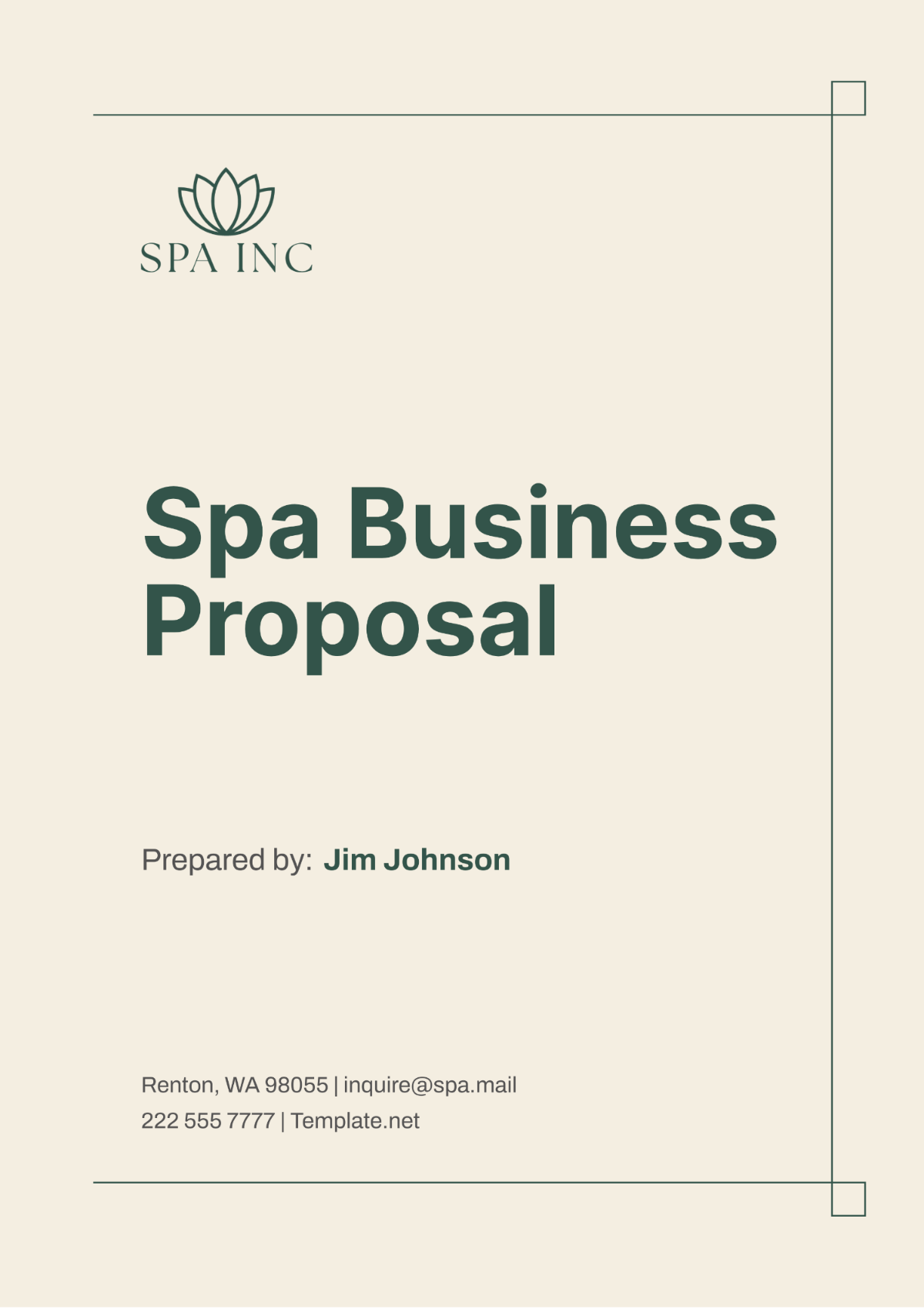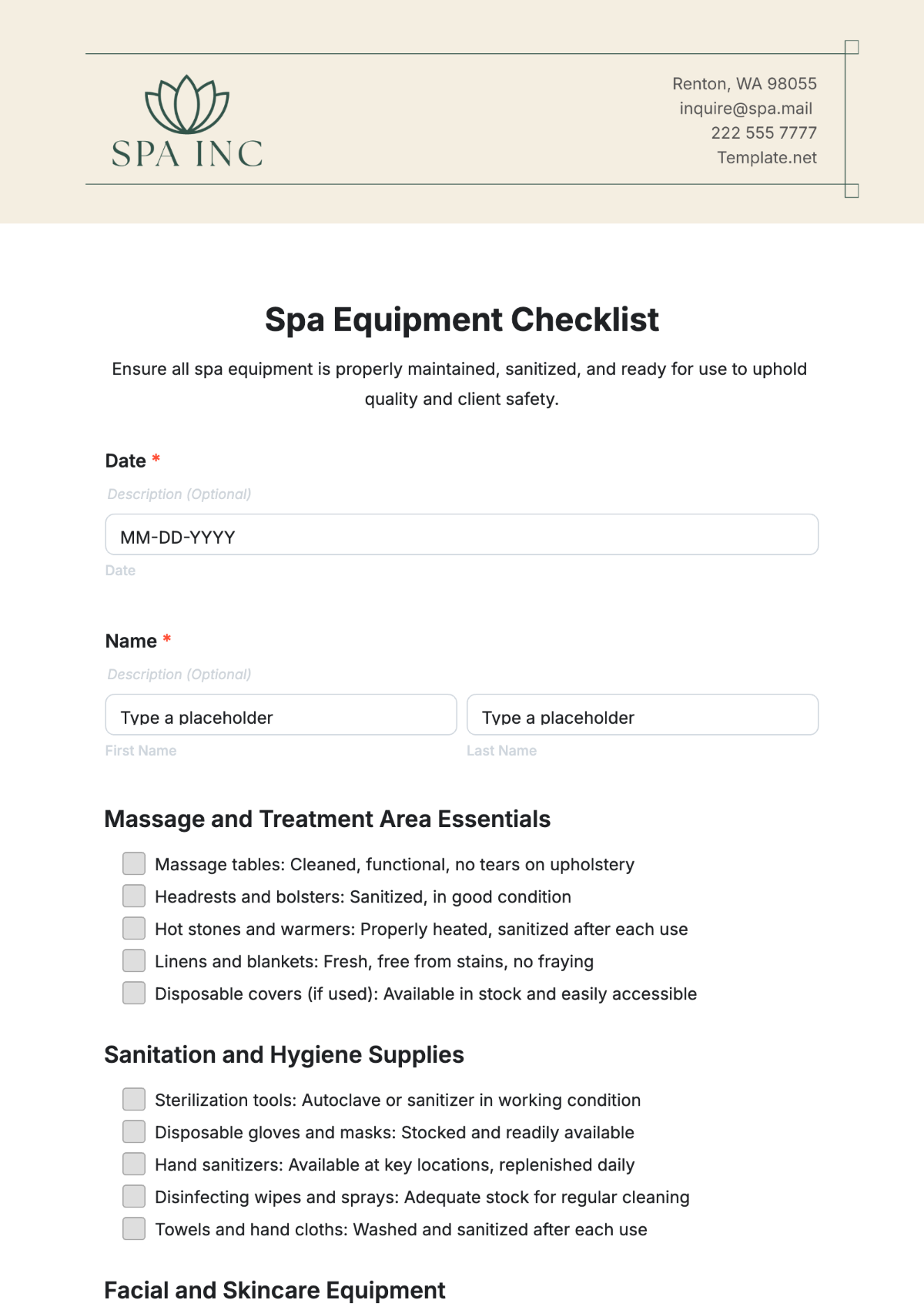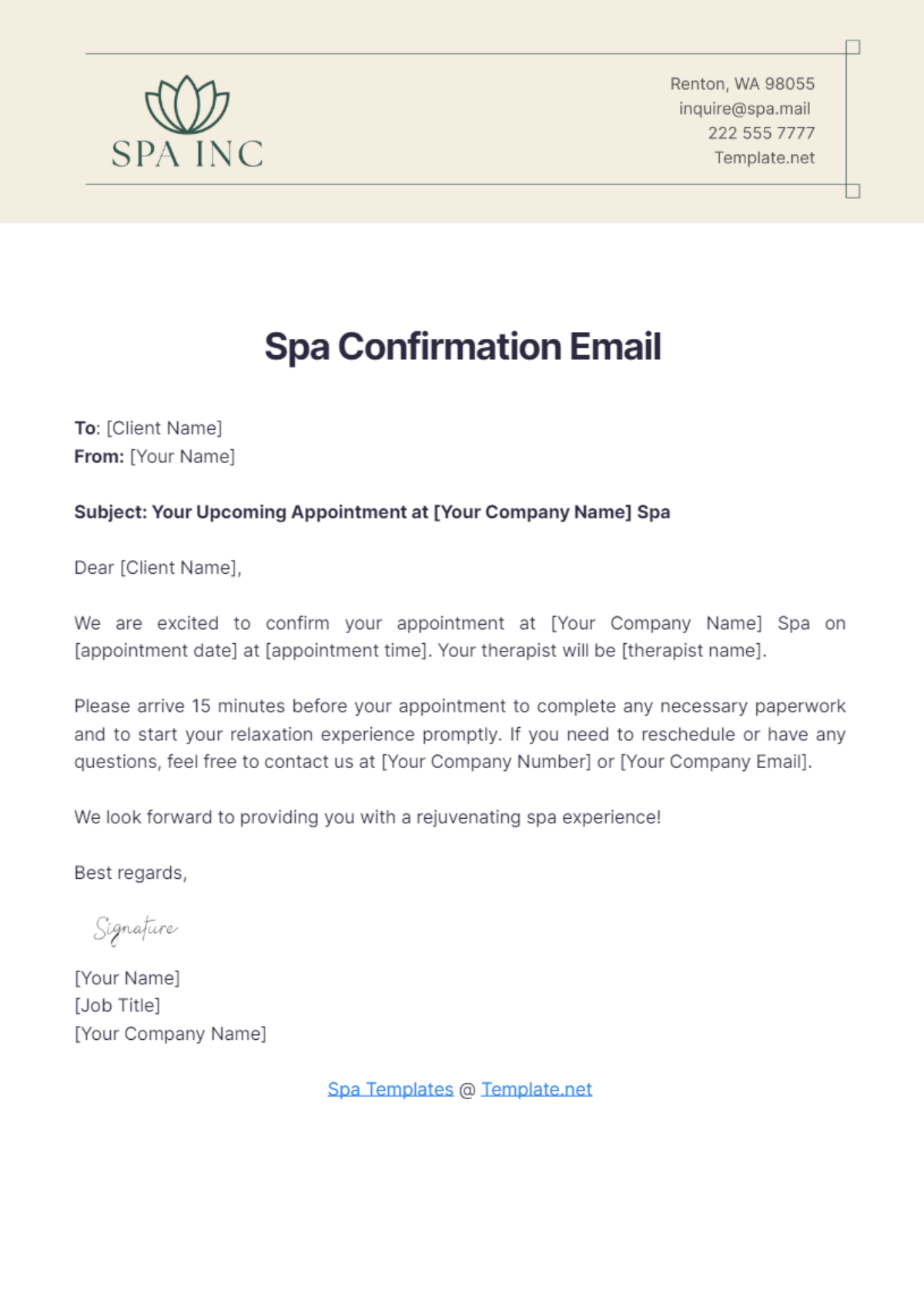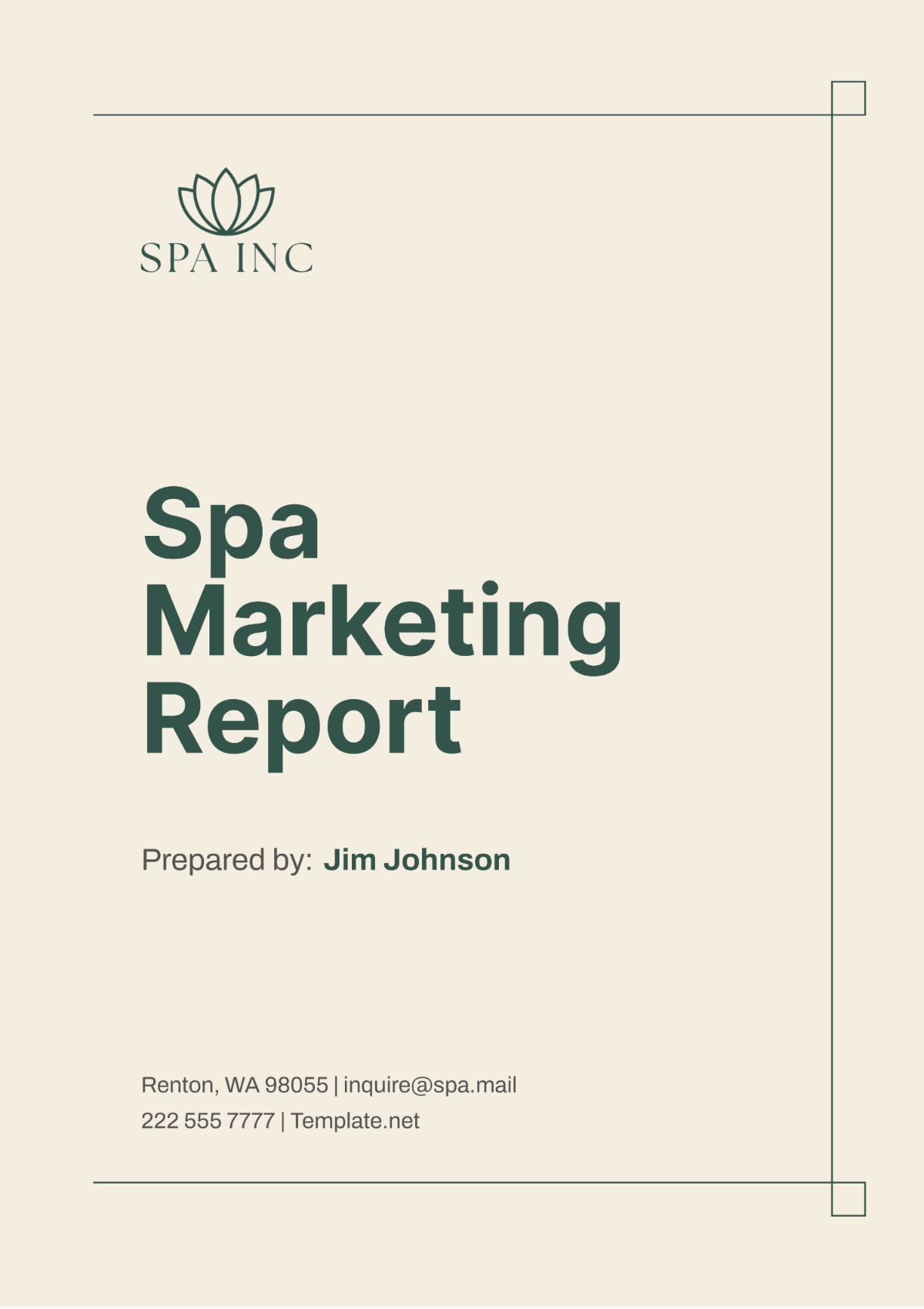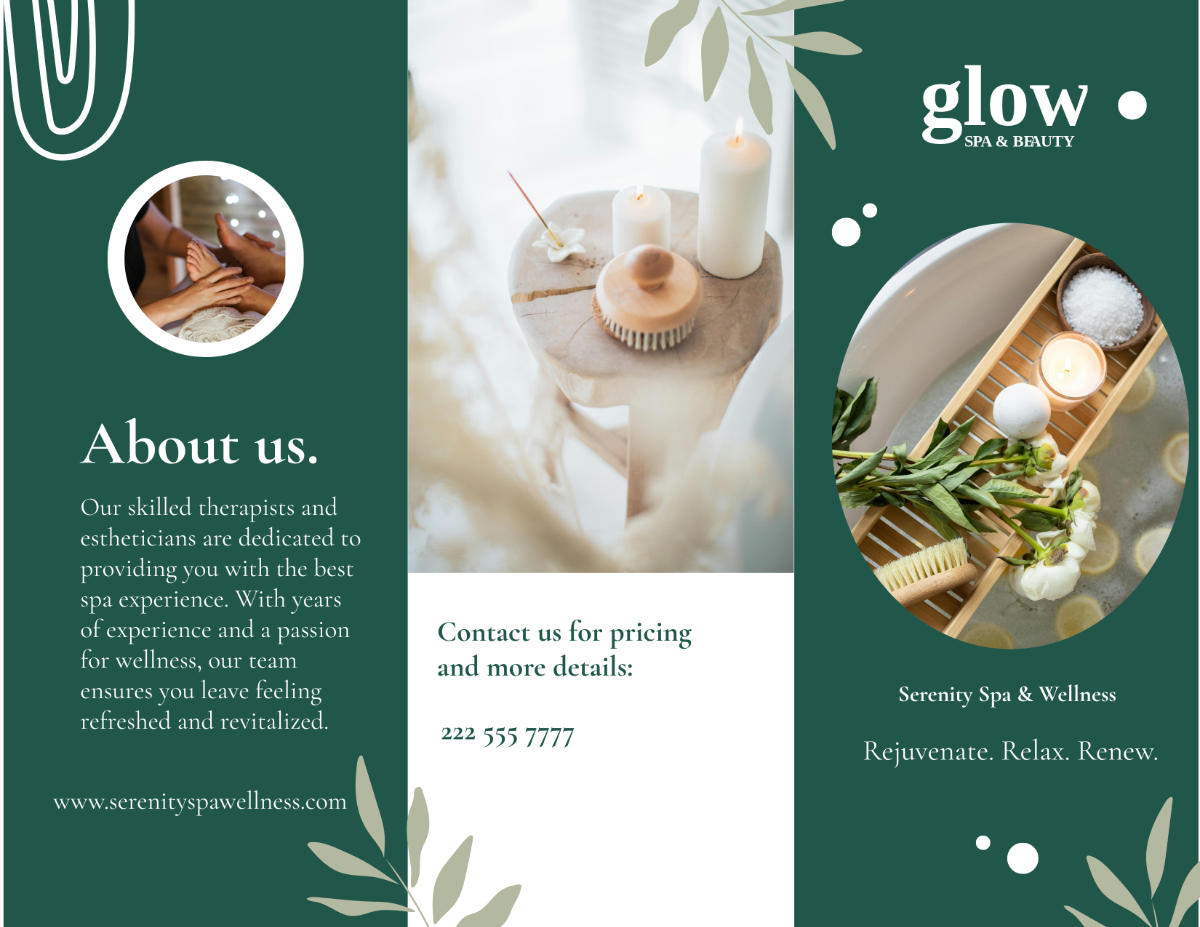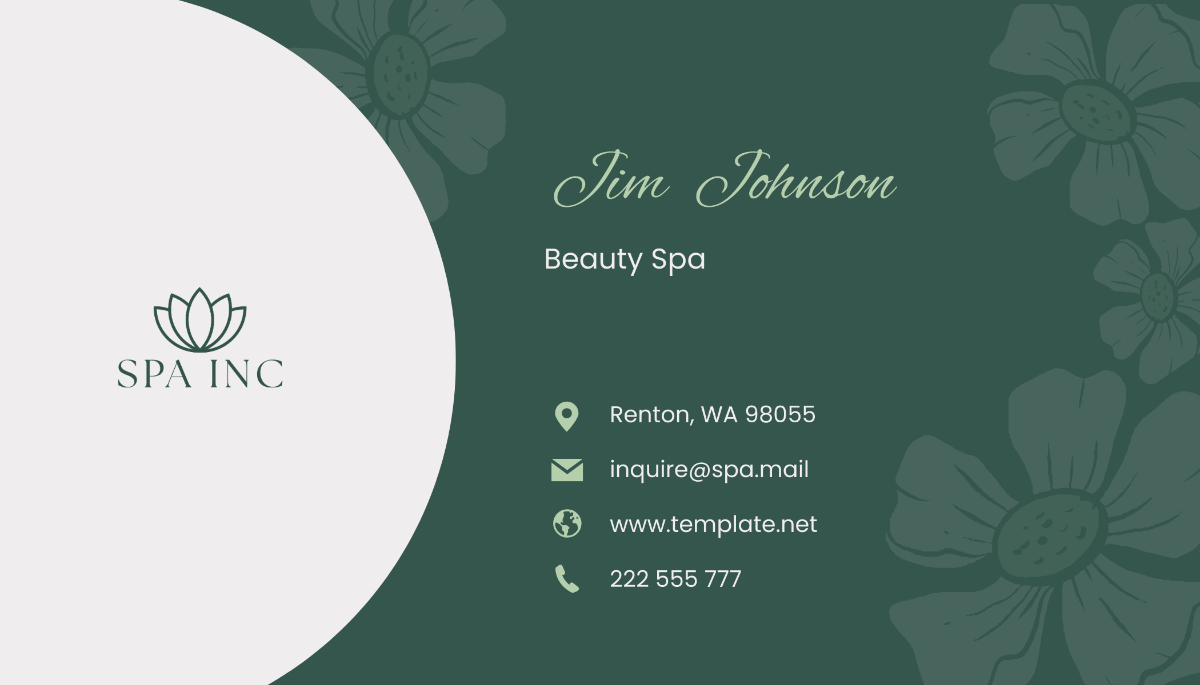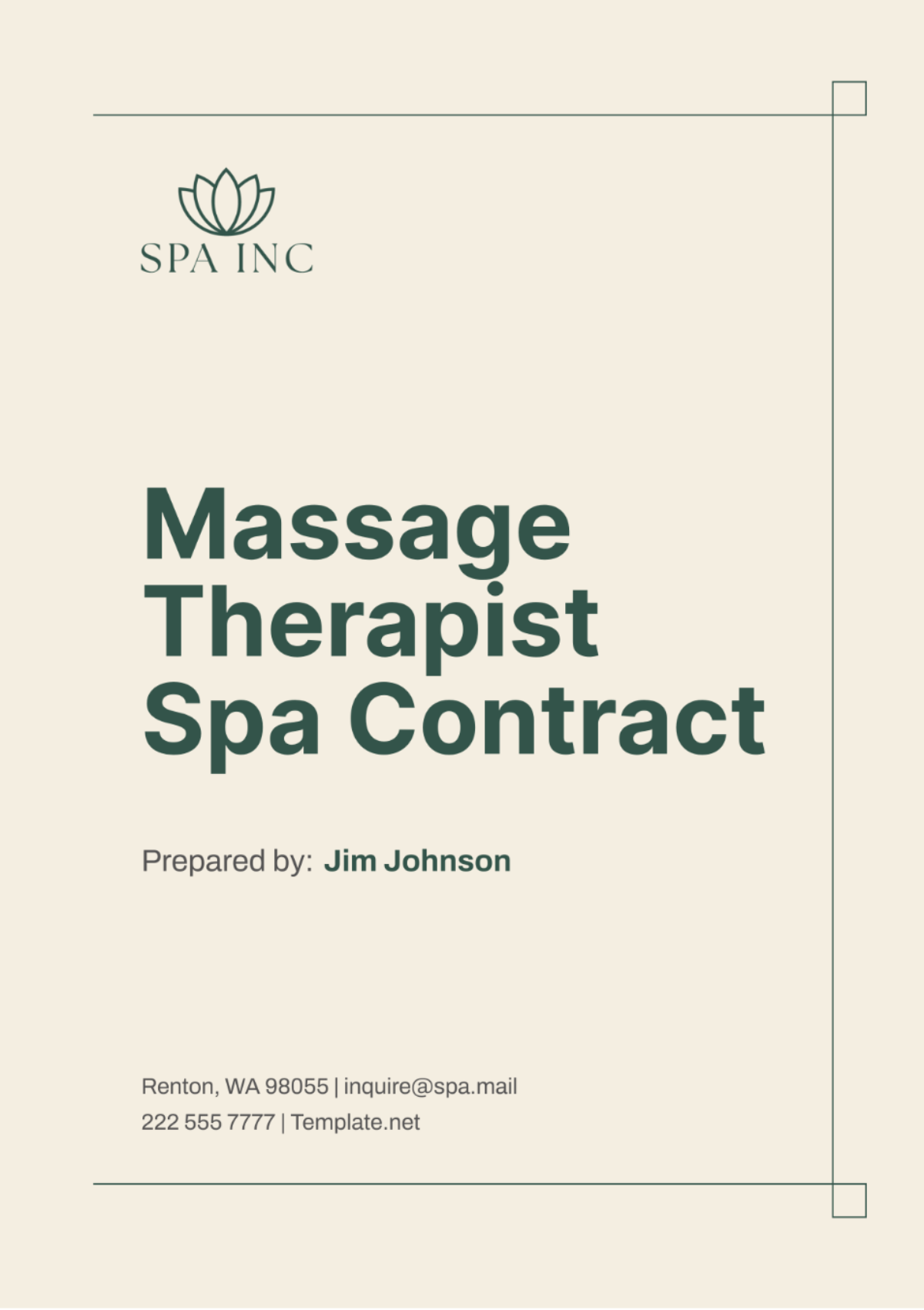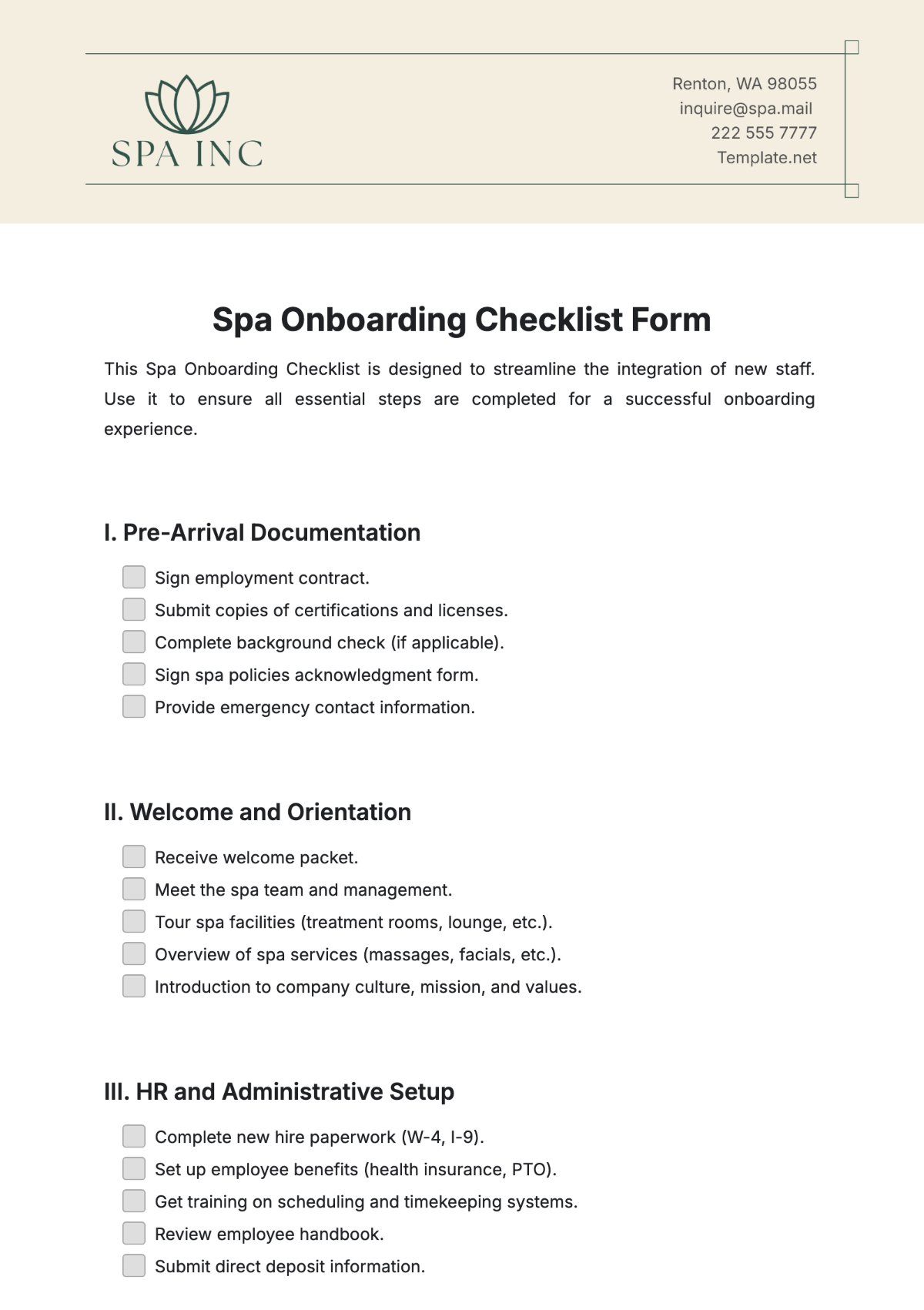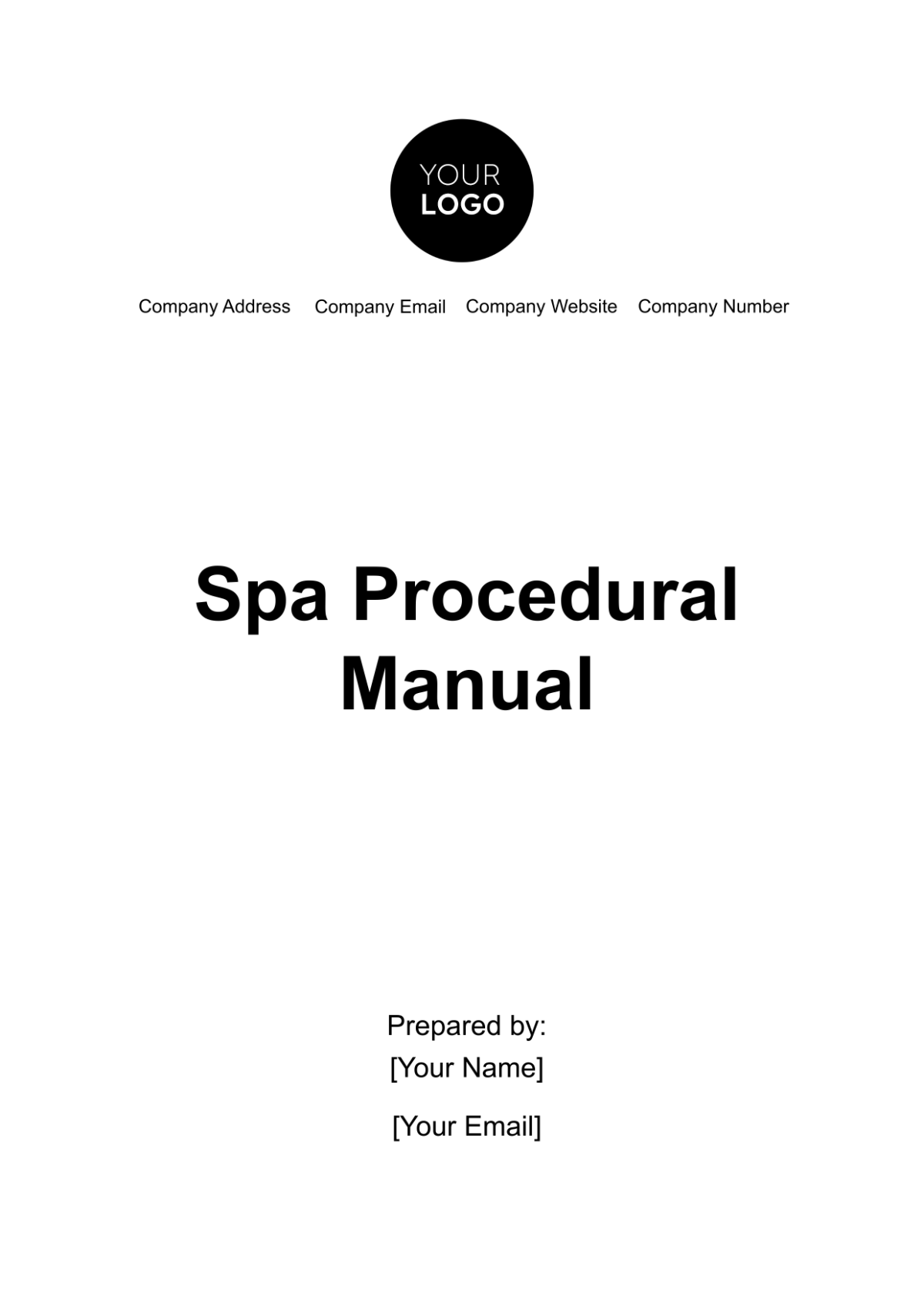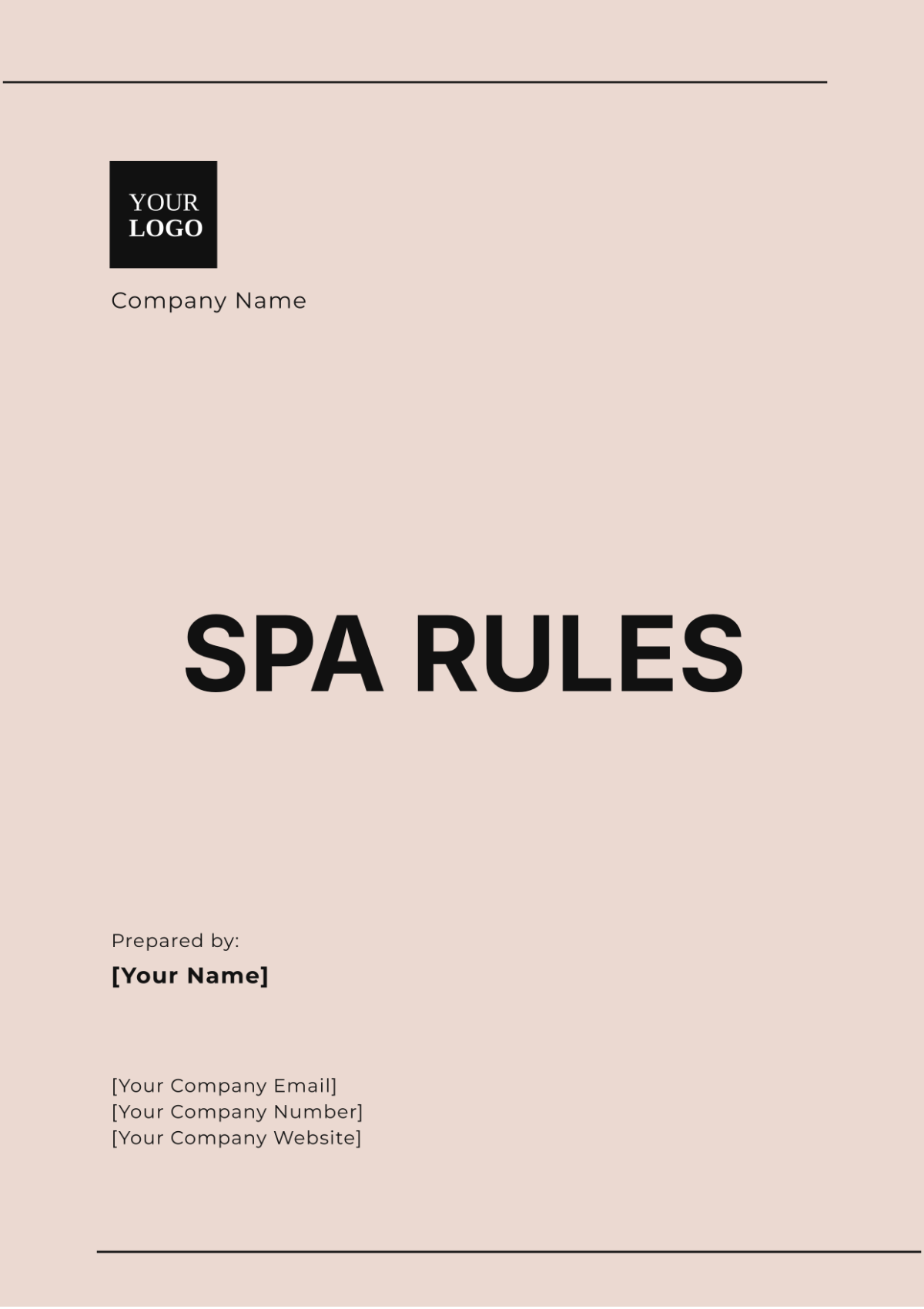Spa Yearly Strategy
I. Executive Summary
This Spa Yearly Strategy by [Your Company Name] aims to outline our goals, priorities, and action plans for the upcoming year. Our mission is to elevate our spa experience by enhancing service offerings, expanding our client base, and improving overall operational efficiency. Through a comprehensive and strategic approach, we plan to position [Your Company Name] as a leader in the wellness and relaxation industry.
Our strategy will focus on several key performance areas:
Customer Satisfaction: Ensuring that every client leaves our spa feeling rejuvenated and satisfied is our top priority. We will implement regular client feedback surveys and closely monitor online reviews to continuously refine and enhance our services based on customer needs and preferences.
Staff Development: Our team is the backbone of our success. We will invest in regular training and development programs to ensure our staff remains at the forefront of industry standards. By fostering a supportive and growth-oriented work environment, we aim to boost employee morale and performance.
Marketing Initiatives: We will launch targeted marketing campaigns across digital and traditional channels to increase brand awareness and attract new clients. Our marketing strategy will include social media engagement, partnerships with local businesses, and the introduction of client loyalty programs to incentivize repeat visits.
Financial Health: Maintaining robust financial health is crucial for sustainable growth. We will closely monitor our financial performance through monthly and quarterly reports, focusing on revenue growth, cost management, and operational efficiency. Our goal is to achieve a minimum annual revenue growth of [0]%.
By aligning our efforts with these targeted goals, we aim to create a rejuvenating atmosphere that caters to our clients' well-being while ensuring sustainable growth for our spa. This strategy reflects our commitment to excellence and continuous improvement, setting the stage for a successful year ahead.
II. Strategic Goals and Objectives
To achieve our vision for [2050], we have set the following strategic goals and objectives, which will guide our actions and decision-making processes:
Enhance Customer Experience: Upgrade facilities and introduce new services to provide a luxurious spa experience.
Increase Revenue: Implement marketing strategies to boost client footfall and retention.
Staff Development: Offer training programs to enhance skills and improve service delivery.
Operational Efficiency: Streamline processes to reduce costs and increase profitability.
These objectives are designed to support our overarching goal of becoming the leading spa in our region, known for exceptional service and a serene atmosphere.
III. Market Analysis
A thorough market analysis is essential to understand the landscape in which we operate. This section contains an overview of the spa industry, competitive landscape, and target audience.
Industry Overview: The spa industry is growing rapidly, driven by increasing demand for wellness and relaxation services. According to industry reports, the global wellness market, which includes the spa segment, is projected to continue growing over the next five years. This growth is fueled by various factors, including rising stress levels, the desire for holistic health approaches, and increased disposable income among consumers.
Competitive Landscape: Our primary competitors are other high-end and mid-range spas in the area. By analyzing their strengths and weaknesses, we can identify opportunities to differentiate our services and attract more clients. Some of the key areas we will focus on include service quality, unique offerings, pricing strategies, and marketing tactics. Additionally, we will closely monitor new entrants and industry trends to stay ahead of the competition.
Target Audience: Our target audience includes affluent individuals seeking luxury wellness experiences, corporate clients looking for stress-relief programs, and tourists visiting our region. Understanding their needs and preferences will help us tailor our offerings effectively. We will conduct surveys, gather feedback, and analyze market trends to continuously refine our target audience profile and ensure that our spa remains attractive and relevant to them.
By conducting a thorough market analysis, we aim to gain valuable insights that will guide our strategic decisions and help us achieve our business objectives.
IV. Marketing Strategy
Our marketing strategy is a comprehensive approach aimed at increasing brand awareness, enhancing client engagement, and driving revenue growth. To achieve these objectives, we have developed a multi-faceted plan that leverages various marketing channels and tactics.
A. Digital Marketing
In the realm of digital marketing, our strategy focuses on leveraging social media platforms like Facebook, Instagram, and Twitter to engage our audience effectively. Through compelling content and strategic interactions, we aim to increase our brand's visibility and attract more clients to our spa.
Social Media: Utilize platforms such as Facebook, Instagram, and Twitter to share engaging content, promote services, and interact with the audience. Implement a content calendar to ensure consistent posting and engagement.
Search Engine Optimization (SEO): Improve website visibility in search engine results pages (SERPs) through keyword optimization, quality content creation, and backlink building.
Email Marketing: Conduct targeted email campaigns to stay in touch with existing clients, inform them about new services or promotions, and encourage them to book appointments.
B. Partnerships
Our partnership strategy involves collaborating with local businesses and influencers to expand our reach and attract new clients. By aligning with like-minded organizations and individuals, we can tap into new markets and leverage their networks to promote our spa effectively.
Local Business Collaborations: Partner with luxury hotels, high-end restaurants, and boutique shops to cross-promote services and reach new clients.
Influencer Partnerships: Collaborate with influencers who align with our brand values and have a strong following to tap into their audience and expand reach.
C. Client Loyalty Programs
Our client loyalty programs are designed to reward our loyal customers and incentivize repeat business. Through membership plans and loyalty rewards, we aim to create a sense of belonging and appreciation among our clients, ultimately leading to increased retention and referral rates.
Membership Plans: Introduce tiered membership plans offering exclusive benefits such as discounted services, access to special events, and personalized offers.
Loyalty Rewards: Reward clients for repeat visits and referrals with loyalty points redeemable for discounts or exclusive services.
V. Financial Plan
The financial plan outlines our budget allocations, projected revenue, and cost management strategies for the year. This section provides a detailed analysis of our financial health and sustainability.
Budget Allocation: We have earmarked funds for various operational areas, including facility upgrades, marketing campaigns, and staff development. A significant portion of the budget will also be reserved for contingencies and unexpected expenses.
Category | Budget |
|---|---|
Facility Upgrades | $[0] |
Marketing Campaigns | $[0] |
Staff Development | $[0] |
Contingencies | $[0] |
By prudent financial management, we aim to achieve strong financial results that support our strategic goals and ensure the long-term sustainability of [Your Company Name].
VI. Implementation Plan
Our implementation plan outlines the timeline and key milestones for executing the strategies detailed in this document. It includes assigned responsibilities and deadlines to ensure accountability and timely completion of tasks, enabling us to effectively monitor our progress and make necessary adjustments.
Key Milestones
Q1: Launch New Services and Marketing Campaigns
Launch New Services: Introduce a range of new services based on market research and customer feedback to meet evolving client needs and preferences. This includes training staff on new offerings and updating our service menu.
Marketing Campaigns: Initiate comprehensive marketing campaigns across digital and traditional channels to promote the new services. Utilize social media, email marketing, and partnerships to generate buzz and attract new clients.
Responsibilities: Marketing team to develop and execute campaigns; Operations team to ensure service readiness.
Q2: Complete Facility Upgrades and Introduce Client Loyalty Programs
Facility Upgrades: Enhance our spa facilities to provide an improved client experience. This includes upgrading equipment, refreshing interiors, and ensuring compliance with safety and wellness standards.
Client Loyalty Programs: Roll out new membership plans and loyalty rewards to incentivize repeat visits and referrals. Develop a seamless process for clients to join and track their rewards.
Responsibilities: Facilities team to manage upgrades; Marketing and Customer Service teams to develop and implement loyalty programs.
Q3: Assess Performance and Adjust Strategies
Performance Assessment: Conduct a mid-year review to assess the effectiveness of our strategies. Gather client feedback through surveys and analyze financial performance data.
Strategy Adjustment: Based on the assessment, make necessary adjustments to our marketing, services, and operational strategies to better align with our goals.
Responsibilities: Management team to lead the review; all teams to contribute insights and recommendations.
Q4: Evaluate the Year’s Success and Plan for the Next Year
Year-End Evaluation: Evaluate the overall success of our yearly strategy. Review key performance indicators (KPIs), client feedback, and financial results.
Planning for Next Year: Based on the evaluation, develop a detailed plan for the upcoming year, incorporating lessons learned and setting new goals.
Responsibilities: Executive team to lead the evaluation and planning process; all departments to provide input and support.
VII. Evaluation and Metrics
To measure the success of our strategy, we will implement a robust evaluation system. Key performance indicators (KPIs) will be used to track progress and make data-driven decisions. These KPIs include:
Customer Satisfaction: Customer satisfaction is a vital measure of our success. We will gauge this through client feedback surveys and online reviews on platforms such as Google, Yelp, and social media. Regularly collecting and analyzing this feedback will help us understand our clients' needs, identify areas for improvement, and ensure that we are consistently meeting or exceeding their expectations. A target satisfaction score of [0]% or higher will be our benchmark.
Revenue Growth: Financial health is crucial for the sustainable growth of our spa. We will track revenue growth through monthly and quarterly financial reports, comparing actual performance against our projections. This will help us identify trends, assess the effectiveness of our marketing and operational strategies, and make necessary adjustments to optimize revenue. We aim for a minimum revenue growth of [0]% annually.
Employee Performance: Our staff plays a key role in delivering exceptional service. Employee performance will be monitored through regular performance appraisals, training assessments, and client feedback. This will ensure that our team is motivated, skilled, and aligned with our service standards. We will set specific performance goals and provide ongoing training to support continuous improvement.
Operational Efficiency: Efficient operations are essential for maintaining profitability and providing high-quality services. We will evaluate operational efficiency through cost reduction and process improvement metrics. This includes tracking key metrics such as average service time, inventory turnover rates, and cost per service. Our goal is to achieve a 10% reduction in operational costs while maintaining or improving service quality.
By continuously evaluating these metrics, we can ensure that our Spa Yearly Strategy remains on track and achieves the desired results. Regular reviews of our KPIs will enable us to identify areas of success and areas needing improvement, allowing us to adapt our strategies proactively. This ongoing process of measurement and adjustment will be integral to our long-term success and growth.
Through diligent monitoring and analysis, we will not only meet our strategic goals but also foster a culture of excellence and continuous improvement within [Your Company Name].


